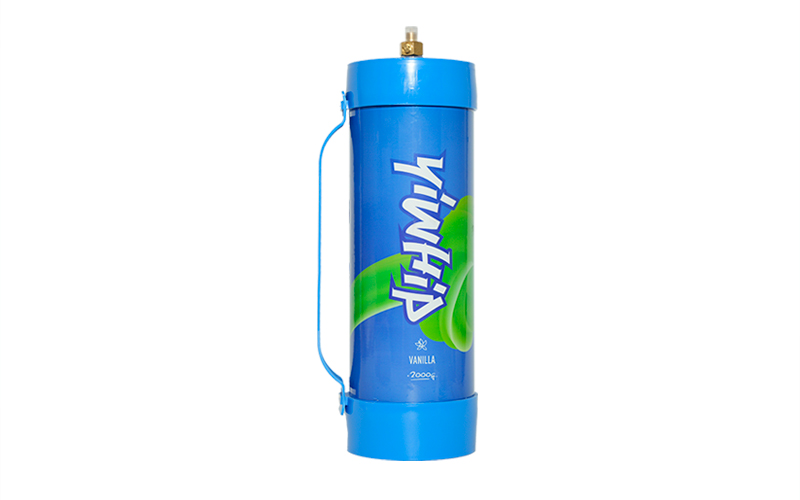When running a whipped cream business, sourcing high-quality ingredients and reliable packaging materials isn't just essential—it's mission-critical. But one crucial element often overlooked is the role of nitrous oxide (N₂O) chargers used to dispense fresh, light, and fluffy whipped cream through siphons. In Denmark, demand for café-grade desserts and artisan-style dairy creations has been steadily rising across restaurants, bakeries, cafés, ice cream parlors, and even mobile coffee vendors operating out of bicycles in Copenhagen's bike-lane dominated cityscape.
Navigating the World of Commercial Grade Whipped Cream Chargers
In today’s fast-paced commercial kitchen setting—from high-traffic Michelin-starred restaurants in Aarhus to seasonal street food pop-ups in Roskilde—every second saved during service matters. Cream dispensers equipped with high-quality charging mechanisms dramatically improve output speed and consistency. However, finding a steady supply of industrial standard N₂O charger canisters can pose challenges. Unlike consumer products found on discount supermarket shelves near Kødbyen's popular Meatpacking District or in grocery delivery boxes from Saxo.com, professional businesses need bulk purchasing arrangements backed by stable import channels and EU-compliant suppliers rooted in sustainable and legally compliant trade networks.
The Impact of Charger Reliability on Daily Operations
Reliable nitrous oxide sources directly affect product output quality, operational costs, and brand reputation. Imagine serving premium strawberry shortcakes at Tivoli Garden’s weekend brunch while experiencing intermittent discharge problems stemming from faulty or low-pressure cartridges—a single batch inconsistency can impact dozens if not hundreds of orders per shift. Furthermore, unreliable deliveries risk inventory disruptions. That's particularly damaging around key culinary periods like J Denmark Day, holiday baking seasons starting right after Christmas, or Easter pastry rushes that require months of ingredient planning and storage rotation ahead of time. Partnering with proven local manufacturers capable of providing real-time inventory reports—and potentially direct logistics partnerships—is more than a logistical choice; it becomes part of brand continuity strategy itself.
Danish F&B operators benefit from proximity to Nordic supplier clusters located along Gothenburg–Fredericia maritime corridors, which streamline import logistics from European nitrous oxide producing plants across Benelux markets like Rotterdam-based gas conglomerates, making it possible to implement JIT-like stocking systems without compromising on safety margins.
Selecting Certified Chargers: Compliance Matters
Foodsafety regulations apply regardless of scale, whether you own one gourmet café stand near Amalienborg Palace or ten chain branches serving dessert shooters inside Copenhagen Airport terminals. In the realm of edible propellants such as N₂O, regulatory bodies such as The Danish Veterinary and Food Administration (Fødevarestyrelsen), closely oversee chemical compositions approved for human consumables. This means non-EU certified chargers—even if they’re significantly cheaper on international e-commerce platforms—can be deemed unsafe under current Nordic hygiene legislation.
- ECHO compliance status of chargers must match HACCP framework certifications held by your facility;
- Certificate validity should extend beyond basic CE mark approvals, covering microbial load levels post-propulsion usage cycles.
- All imported stock must accompany official REACH and RoHS declaration documents, ensuring no toxic residual leaching happens when pressure valves open under heat-exposed conditions commonly observed during summertime rooftop patisserie setups near Nyhavn Canal areas where ambient temps rise rapidly between May–September outdoor service zones.
This level of scrutiny applies particularly for companies participating in national food fairs like Smags-Hjørnet, which enforce additional testing protocols on raw ingredients and ancillary processing tools including dispensing agents involved in dessert-making workflows before approving venue access permits.
Bulk Supply vs Local Vendor Dynamics in Danish Markets
In Denmark, the decision to source through centralized wholesalers or regional cream accessories dealers depends on your volume requirements, location logistics, and long-term branding needs. For small urban patisseries handling up to fifty chargers monthly, partnering directly with specialized Kopenhagener gas refill shops specializing in restaurant equipment rentals ensures timely availability—something important when catering last-minute private events booked only days in advance through platforms like Bookmio or Treatwell.
However, large chains or frozen desserts franchisers dealing with >500 unit consumption per billing cycle typically enjoy scaled cost advantages when negotiating with major Danish-owned wholesale distributors like Brugsen Holding or Bybo Bedre—but only assuming contracts include clauses guaranteeing minimum quarterly replenishment rates matched proportionally across all satellite locations throughout Zealand and Funen territories.
To mitigate dependency risks inherent in single vendor reliance, forward-looking Danish entrepreneurs often build niched dual sourcing models, balancing base procurement volumes with alternative providers in case one experiences production bottlenecks tied to global nitrogen price fluctuations or customs clearance slowdowns resulting from unexpected inspections introduced by Skat postBrexit adjustments to commodity flows crossing the Great Belt Bridge into eastern Denmark zones from continental Europe imports originating west Germany rail terminals like Duisburg.
Conclusion: Choosing Wisely to Strengthen Your Whipping Capacity
Your success in delivering exceptional dessert experience relies partially on unseen components like cream charge units working seamlessly during peak order influxes. Ensuring consistent, traceable, legal and safely tested charging solutions protects both customer experience quality levels and business liability thresholds mandated by Danish health monitoring agencies. Whether based on proximity, certification portfolio depth or multi-supplier flexibility—building solid alliances around N₂O supply chains empowers cafes to elevate menu standards and operate fearlessly during busy holiday sales cycles or sudden demand spikes caused by unexpected social media trends sweeping influencer feeds across Scandinavia's leading lifestyle pages on Instagram Stories tagged under #foodinKbh. Prioritize verified partner selection over marginal price savings whenever critical service stability metrics are at stake—that's not just good practice in the whipped cream sector but reflects smart risk management strategies relevant for food entrepreneurship landscapes across modern Scandinavia.

